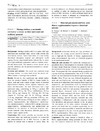Please use this identifier to cite or link to this item:
https://accedacris.ulpgc.es/handle/10553/41920
| Title: | Moringa oleifera, a sustainable alternative: a review on their nutritional and medicinal potential (P 120-F) | Authors: | Alvarez-Perez, J. Sanchez-Villegas, A. Pérez-Cabrera, J. Díaz-Collado, F. García-Guerra, R. B. Serra-Majem, L. |
UNESCO Clasification: | 3206 Ciencias de la nutrición | Issue Date: | 2018 | Journal: | European journal of clinical investigation (Print) | Conference: | 52nd Annual Scientific Meeting of the European Society for Clinical Investigation “Precision medicine for healthy ageing”, Barcelona, Spain, 30th May – 1st June 2018 | Abstract: | Background: Moringa oleífera (MO) is a plant with high nutritional and medicinal value, which could prevent and treat human diseases. Native from India, it is now widely distributed throughout tropical and subtropical world regions. Several experimental studies indicate that its leaves have high nutritional components such as vitamins, minerals and amino acids. This narrative review focuses on its possible nutritional and therapeutical potential as a sustainable alternative. Material and methods: This search was conducted using “moringa oleifera” as a key word within the article title. Other varieties of moringa were excluded. Results: Several in vitro experiments and animal studies show the potential benefits of MO for human health. Its leaves, pods and seeds contain a large variety of essential phytochemicals (tannins, sterols, saponins, terpenoids, phenolics and flavonoids). The dried MO leaves have a high nutritional value, contributing by 100 g of product: 329 Kcal; protein 29·4 g; fat: 5·2 g; carbohydrates: 41·2 g; fiber: 12·5 g; and vitamins B1: 2·02 mg; B2: 21·3 mg, vitamin C: 15·8 mg; and Vit E; 10·8 mg; calcium: 2185 mg; magnesium; 448 mg; potassium 1236 mg; iron: 25·6 mg. The MO multiple biological activities (antiproliferation, hepatoprotective, anti-inflammatory, antinociceptive, antiatherosclerotic, oxidative DNA damage protective, antiperoxidative, cardioprotective and antimicrobial) are attributed to the presence of functional bioactive compounds (phenolic acids, flavonoids, alkaloids, phytosterols, natural sugars, organic acids). Conclusions: This review provides an overview on the nutritional values and medicinal properties for commercial and pharmacological use of MO. However, to date the number of clinical trials in humans is scarce. Thus, the level of evidence is low. Further clinical studies are needed to confirm or refute the pharmacological and beneficial effects of MO. Moreover, its safety on human health has to be assessed to ensure its adequacy as a therapeutical tool for chronic or long-term diseases treatment. | URI: | https://accedacris.ulpgc.es/handle/10553/41920 | ISSN: | 0014-2972 | DOI: | 10.1111/eci.12926 | Source: | European Journal of Clinical Investigation [ISSN 0014-2972], v. 48 (S1), p. 213-214 |
| Appears in Collections: | Póster de congreso |
Page view(s)
92
checked on Jan 27, 2024
Download(s)
88
checked on Jan 27, 2024
Google ScholarTM
Check
Altmetric
Share
Export metadata
Items in accedaCRIS are protected by copyright, with all rights reserved, unless otherwise indicated.
